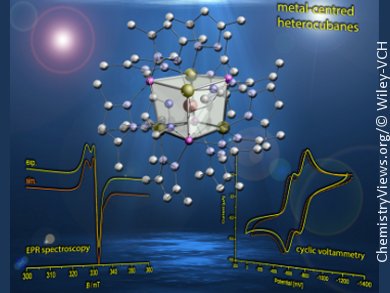In view of their relevance for many catalytic processes, the field of transition-metal complexes containing metal–silicon bonds has received considerable attention over the last decades. M0 complexes of Group 10 metals with Si-containing ligands, in particular homoleptic ones, are only known with silylene ligands (SiR2). Therefore, Frank Breher and his group, Karlsruhe Institute of Technology (KIT), Germany, have become interested in investigating how analogous d10 silyl (SiR3) complexes of palladium(0) and platinum(0) might be accessible.
By using a multifunctional silyl ligand based on the tris(3,5-dimethylpyrazolyl)silyl scaffold [Si(3,5-Me2pz)3]–, they succeeded in obtaining the homoleptic tetrakis(silyl) complexes of Pd0 and Pt0, which were characterized by various methods, including multinuclear NMR spectroscopic techniques, cyclic voltammetry in combination with DFT calculations, X-ray crystallography, and EPR spectroscopy. The complexes form very unusual metal-centered heterocubane structures in the solid state and in solution. The rather rigid heterocubane ligand shells were found to facilitate the stepwise, quasi-reversible oxidation to their d9 MI and d8 MII analogues.
- Homoleptic Tetrakis(silyl) Complexes of Pd0 and Pt0 Featuring Metal-Centred Heterocubane Structures: Evidence for the Existence of the Corresponding Mononuclear PdI and PtI Complexes,
F. Armbruster, T. Augenstein, P. Oña-Burgos, F. Breher,
Chem. Eur. J. 2013.
DOI: 10.1002/chem.201303299




